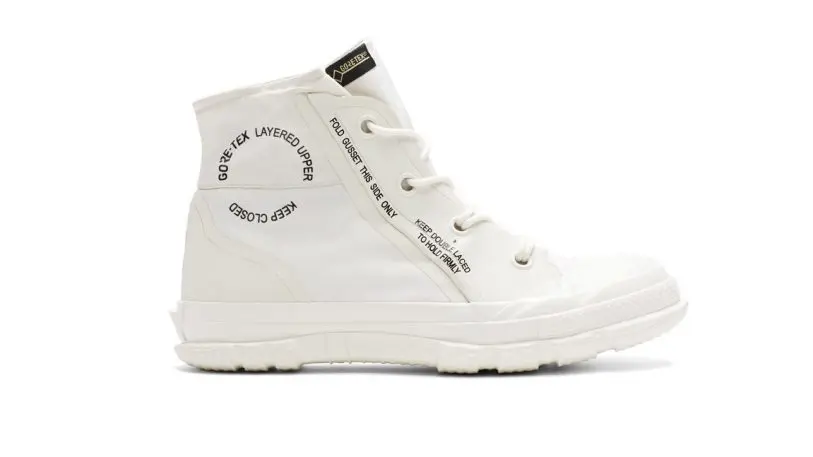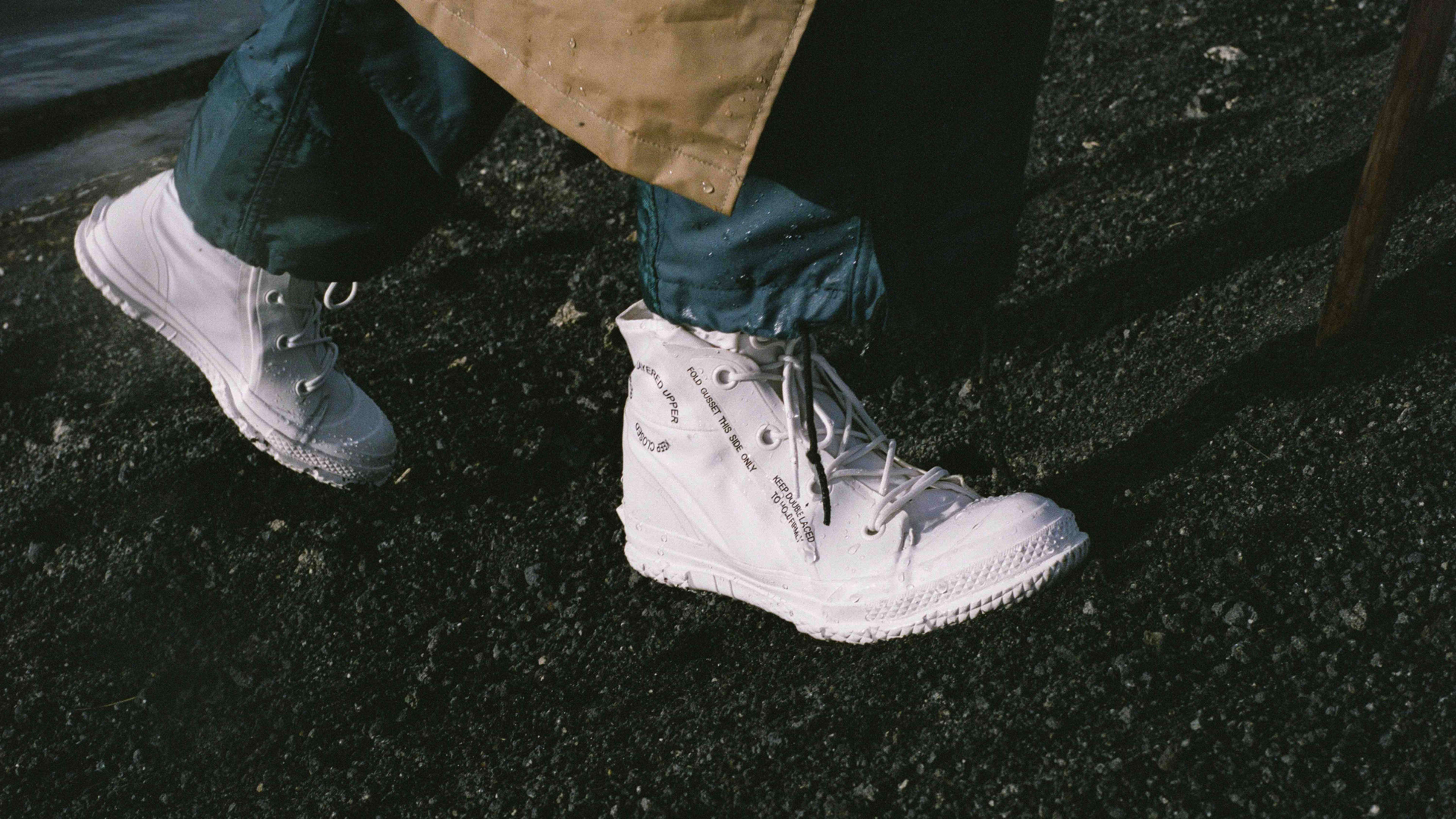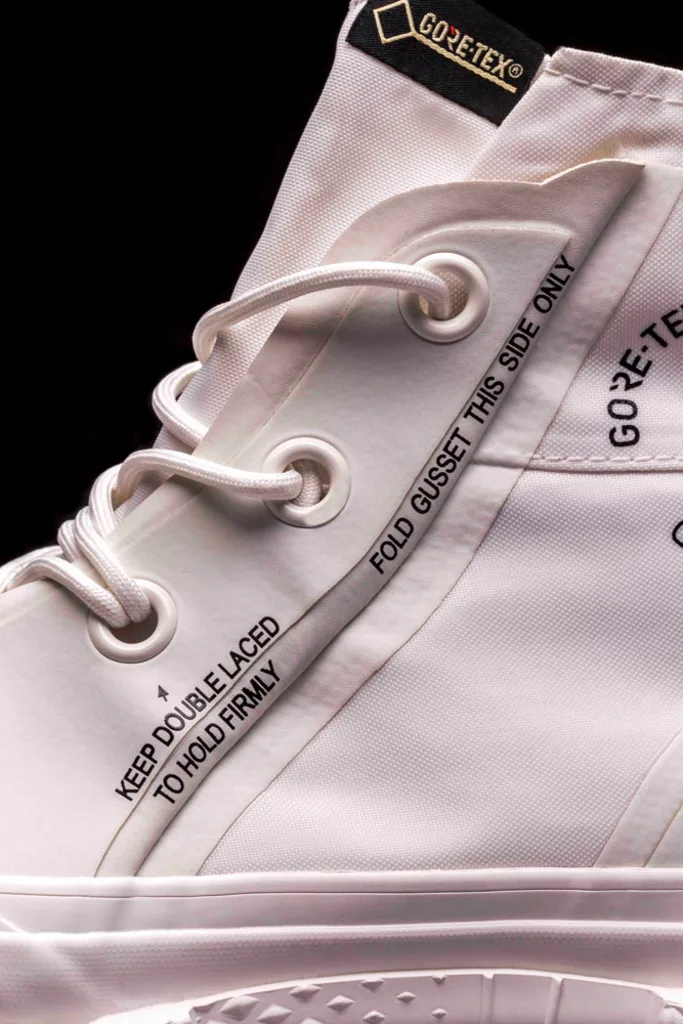Chuck Taylors have a cult fan base–people who appreciate the shoes’ timeless American style. But you can’t wear them year round, unless you want soggy, gross feet. The solution? The Chuck Taylor MC18–the latest release from Converse.
It feels like a Chuck Taylor from another dimension. The outer sole is thick and treaded, like any utility boot you know. But the upper doesn’t have the thick weight of a leather Timberland. It’s made of a backpack-like material, coated in DWR and lined in Gore-Tex.
So on your foot, the new Mountain Club version of the Chuck Taylor All Star is a pleasing bit of cognitive dissonance. It’s light and hefty at the same time. It’s raw with uncured rubber, visible seams, and instructions like “keep double laced to hold firmly” printed in bold on the upper. But it’s also structurally sound and completely waterproof, with a gusseted tongue so you can stand in water or slush and keep your feet dry.

Mountain Club is the latest, winter seasonal evolution of Converse’s Urban Utility sneaker line, which first debuted last year. It’s designed for 365 days of wear in city environments–perhaps not the most extreme cold since it’s not heavily insulated, but certainly the wettest stuff winter has to throw at you. Coming in three reimagined silhouettes, including the classic Chuck Taylor, the military-inspired Fastbreak, and the low top One Star, Mountain Club will go on sale November 8, ranging from $120 to $150.

For Converse, Mountain Club is part of a one-two strategy of brand reinvention, which began when Nike alum Davide Grasso took over the company as CEO in 2016. The strategy is focused on diversifying Converse’s portfolio–which was too reliant on the legacy Chuck Taylor itself–and putting more, different products on the market. On one side, Converse is teaming up with artistic “co-creators” like Tyler the Creator, to push the company outside its comfort zone and attract new audiences. On the other side, Converse continues to listen to its customers, and mine its own archives for inspiration, considering how it can capture the latest trends in a way that feels authentic, and recognizable, to the brand.
Mountain Club is born from the second strategy. Converse realized that many customers couldn’t wear its namesake canvas shoes in wet and winter months. But Converse was founded in 1908 as a company that innovated in rubber, specializing in winter footwear. Only in 1915 did the company begin manufacturing athletic shoes. And during World War II, the company refocused on manufacturing all sorts of rubberized gear, including real-deal military boots dubbed Bunny Boots, for troops.

All of this history–but the Bunny Boot especially–was mined to create the Mountain Club aesthetic. “We’ve used the classic styles of extreme cold, and rubber,” says Phil Russo, global creative director at Converse. “We thought it made sense to go back in time.”
A bit of that rawness is broadcast in all of the printing you can spot on the shoes themselves. The Chuck Taylor version features your size on the heel, an explanation of Gore-Tex on the ankle, instructions on how the tongue is fused to the upper along one seam, and the aforementioned verbage about proper lacing. It’s a lot of exposition to put on a shoe, and, no doubt, a nod to designers who modernized the approach, such as Virgil Abloh.
Most of all, though, the Mountain Club line acknowledges that utilitarianism is a major movement in fashion that’s slowly been on the rise for years now. The trend exposes the construction methods of apparel, by design, rather than hiding them behind clever or sleek artifice. Russo believes there are a few of reasons for it. He posits that in an increasingly digital world, analog objects, and all their nuances, become more appealing. But he also believes that it’s part of a general zeitgeist of trying to be more conscious consumers of the precarious world around us.
“I think consumers are more informed and curious, and there’s a certain beauty to revealing how things are built and what’s inside. People want to be inside many things, what’s happening with the environment, and our government,” says Russo. “When those things are beautiful, it’s much more gratifying.”
Especially when they keep your feet dry.
Recognize your brand’s excellence by applying to this year’s Brands That Matter Awards before the early-rate deadline, May 3.













